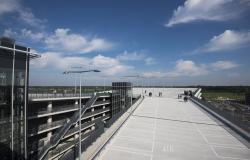
Are the price differences with other countries large?
Rather. TNO already concluded in 2021 that the rates of heat suppliers in the Netherlands were significantly higher than in countries such as Sweden, Denmark and Germany. Follow-up research now shows that rates here have also risen a lot faster.
In 2023, Dutch people paid an average of 66 euros for a gigajoule of heat. This includes the price ceiling that significantly dampened the energy bill. In Sweden people paid an average of 23 euros per gigajoule, in Denmark 31 euros and in Germany 38 euros.
From 2020 to 2023, rates in the Netherlands increased by 62 percent. In the same period, heat became 11 percent more expensive in Sweden and 28 percent more expensive in Finland – the fastest riser after the Netherlands.
Why those differences?
According to TNO, the differences are difficult to explain. The researchers mention the maximum rates that the supervisory authority for Consumers and Markets (ACM) sets every year as a major factor. Because households on a heating network cannot switch to another supplier, maximum rates are the way to protect consumers. The promise is that district heating is no more expensive than a natural gas central heating boiler.
This link to the price of natural gas meant that district heating quickly became much more expensive when the price of gas skyrocketed in recent years. “There are few financial incentives for heating companies to go far below that,” says researcher Pieter Verstraten of TNO.
Is it useful to link the rates for district heating to those for natural gas?
In The Hague, there has been talk for years about a law that should come into effect next year, which will make the price of heat based on the actual costs. It already works this way in Denmark. A heating network that runs on biomass or the incineration of waste, as is partly the case in Amsterdam, could then be less sensitive to rising natural gas prices.
It is notable that the ACM warned last week that releasing the link to the gas price will not automatically lead to a lower rate. Vattenfall, supplier of district heating to more than 50,000 households in Amsterdam, says it already bases its rapidly increased rates on actual costs.
How does Vattenfall explain the differences with other countries?
Prices can differ per country, Vattenfall argues, with reference to a bottle of cola that is also more expensive in the Netherlands. A difference with Denmark and Sweden is that many more people are connected to heating networks – in Denmark even 65 percent. The result is that the costs of managing the grid can be spread over more customers. According to Vattenfall, government policy can also make a big difference if energy companies in other countries receive more subsidies for the construction of heating networks.
Rising gas prices are also an important cost item for the time being. A large part of the district heating for Amsterdam residents comes from power stations near Diemen and these are fired with gas. Vattenfall also cited the increased costs of materials and personnel for the construction and maintenance of the networks as the reason for increasing the fixed rates by approximately two hundred euros this year.
Is Vattenfall gaining access to its heating networks?
They don’t seem like a big deal for Vattenfall now. The energy company emphasizes that the ACM also monitors the returns of heat suppliers and that these have not been very generous in recent years.
When outgoing Minister Rob Jetten (Climate and Energy) wanted to restore part of the rate increase last week through an emergency measure, the grapes for Vattenfall were so sour that the energy company no longer wanted to participate in a scheme for Amsterdam tenants who had been promised that they no longer had to pay when switching to the heating network. Vattenfall even stated that it was no longer profitable to connect neighborhoods.
But confidence in heat suppliers has suffered a dent. Suspicion about Vattenfall’s earnings played a major role when Amsterdam housing associations faced rising rates for their tenants last month. The rates are opaque, according to the corporations.
This transparency becomes all the more important if the heat price is based on the actual costs, which is currently lacking in the Netherlands, says TNO. Verstraten: “In Denmark, the rates of heating companies are listed very precisely and catalogs of hundreds of pages show what it costs to generate and supply heat to people’s homes.”
Is it wise to quickly make more homes natural gas-free with heating networks if there is no competition?
The fact that there is no competition on the heating network is not in itself the problem, according to TNO. After all, the rates abroad are a lot milder. “As long as there is more transparency. The data that heating companies submit currently only includes part of the costs and does not provide insight into the entire chain,” says Verstraten.
In the previous study, TNO also warned that the heating sector in the Netherlands is determined by a few large energy companies. That can put a brake on innovation, the researchers say. There are promising examples of heat networks abroad with lower temperatures and a variety of heat sources, such as residual heat and a collective heat pump that runs on electricity. The result is that the heating network does not immediately become very expensive when the gas price rises.
Tags: district heating Netherlands expensive Western European countries
-




